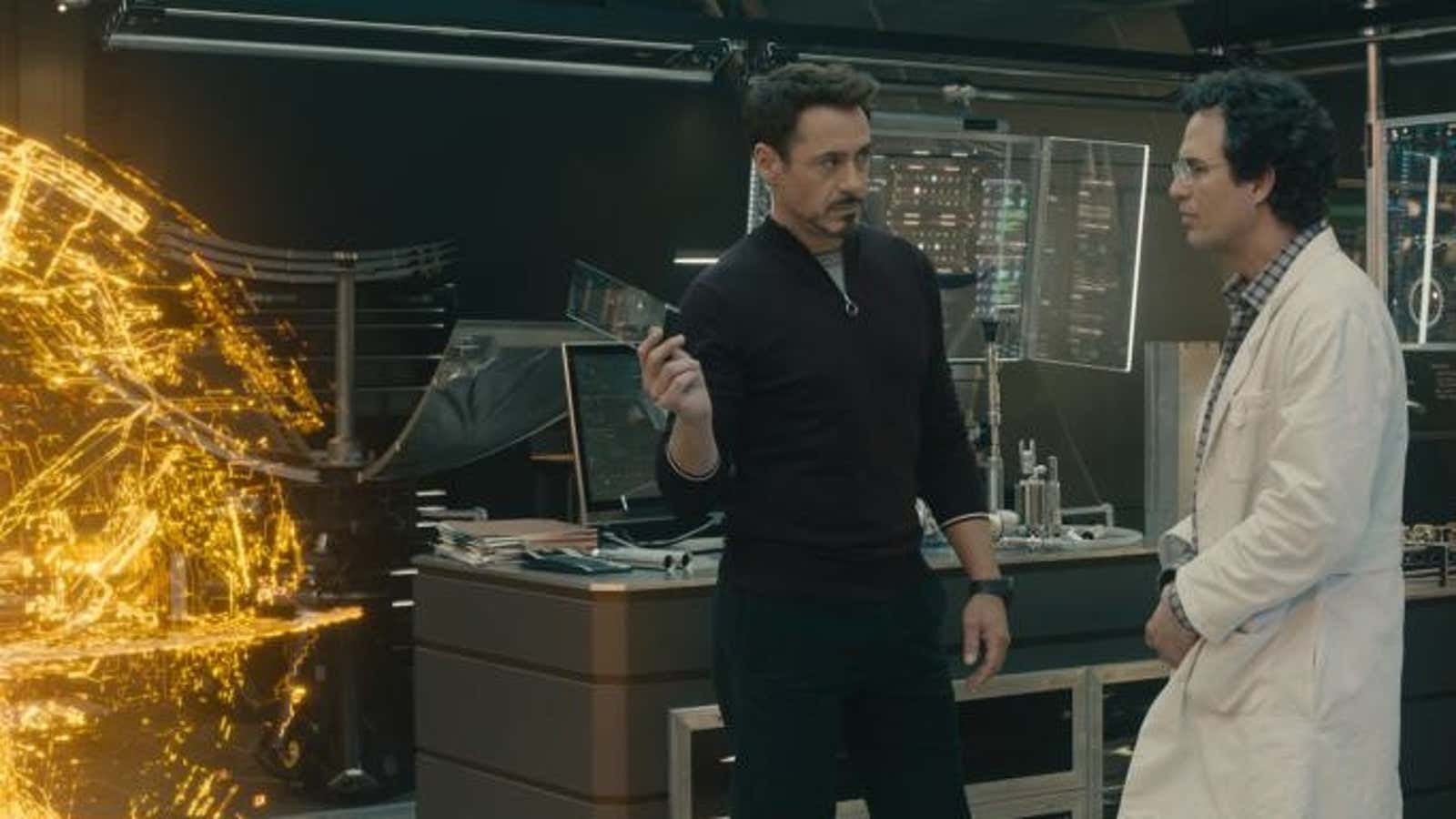Science fiction often influences the world of technology. The iPad is essentially the tablet computer from Star Trek: The Next Generation, and Back to the Future II in 1989 got a lot right about the technology of 2015. The man who invented the world’s first flip phone, the Motorola Star-Tac, was inspired by the Star Trek communicator.
John Underkoffler, who created the (still) futuristic user interfaces in Minority Report and Iron Man, told Quartz that the feedback loop between science fiction and reality is accelerating with every new summer blockbuster. And today, he says, there’s an openly symbiotic relationship between science fiction and the technology we use in real life.
“Back in Star Trek’s day, the original TV series, I don’t think there was any kind of consciousness shared sense among engineers, among technology companies, that it was even a thing to do, to bring the stuff that was shown fictionally and bring it into the real world,” Underkoffler said. “Today, you just sort of assume that.”
Underkoffler is now CEO of Oblong Industries, a company that is trying to turn the interfaces he designed for movies into actual products. He recently won a National Design Award for his work on user interfaces, and is trying to use that expertise to redesign the way we interact in meeting spaces in the digital age.
Film houses are bringing technologists like Underkoffler on to films to create believable tech. He said that Robert Downey Jr. stopped by his office during the filming of Iron Man 3 to work on a new gesture language for his character, Tony Stark, to control his suit in the film, because he wanted it to be believable. “Movies now know that it’s worthwhile and valuable to go into the industry and get technology experts to kind of help them shape what they’re showing in the films,” Underkoffler said.
Inspiration has become a two-way street, as scientists and engineers channel what they see in films into their research. Chris Atkeson, a robotics professor at Carnegie Mellon University, is working on a real-life version of Baymax, the inflatable medical robot in Disney’s Big Hero 6. While Atkeson’s version is unlikely to sport rockets or body armor, he is working on creating an inflatable robot that can safely interact with humans, inspired by the film.
“Five minutes after watching Avengers 2 you can ask ‘when do we get that thing?’ It’s a sort of jump of expectations,” Underkoffler said. “There’s also a tight feedback loop now.”
It’s unlikely that the writers of the original Star Trek series—who were on a strict budget—expected to influence a generation of scientists, engineers and developers with their clunky boxes and (not very) automatic doors to actually build working versions of their ideas. Now, it’s big business to have believable technology in films: Sci-fi movies gross hundreds of millions of dollars every summer.
“It took 30 years for the Star Trek communicators to become the Motorola Star-Tac, and even longer for the communications satellite that Arthur C. Clarke fictionally invented in one of his books to become reality,” Underkoffler said. “But now, this could happen in six months.”
